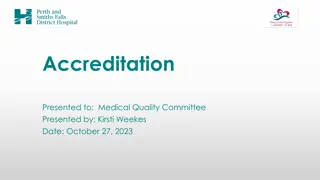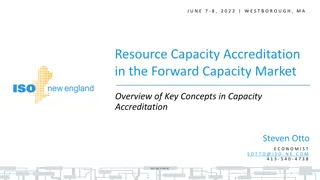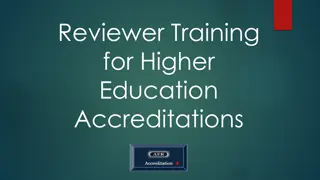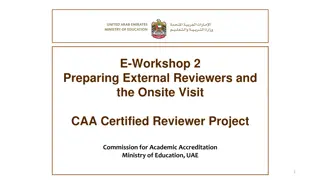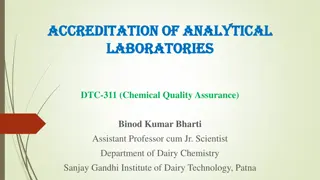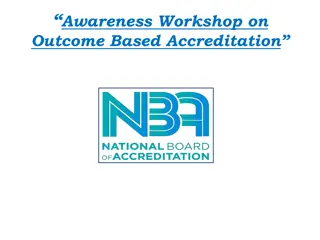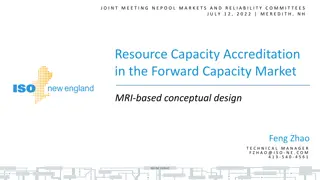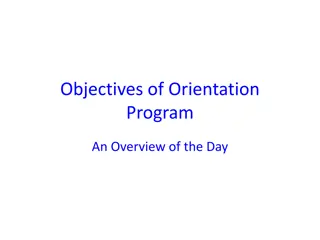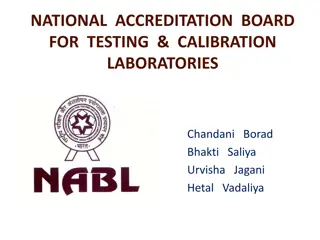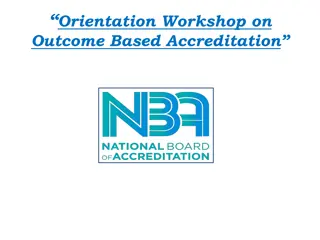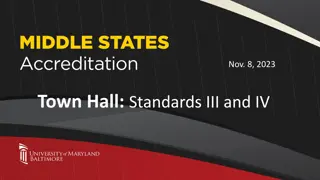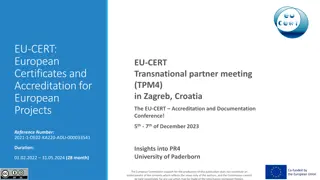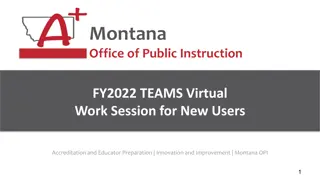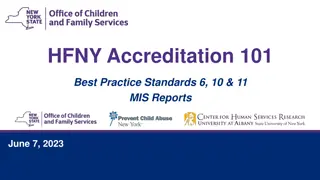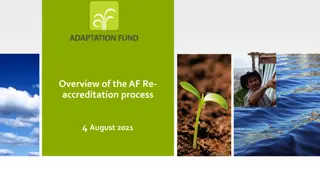Overview of Accreditation and Regulatory Policy by Jacques McMillan
Former European Commission Official, Jacques McMillan, delves into the topic of accreditation fulfilling expectations in regulatory policy for the free movement of goods and market surveillance. He discusses the evolution from product-focused approaches to including framework elements, the New Approach of 1979, stakeholder desires in the 80s, and the importance of trust in ensuring safe products. McMillan emphasizes the various quality factors contributing to product safety and the roles of different entities in upholding standards.
Download Presentation

Please find below an Image/Link to download the presentation.
The content on the website is provided AS IS for your information and personal use only. It may not be sold, licensed, or shared on other websites without obtaining consent from the author.If you encounter any issues during the download, it is possible that the publisher has removed the file from their server.
You are allowed to download the files provided on this website for personal or commercial use, subject to the condition that they are used lawfully. All files are the property of their respective owners.
The content on the website is provided AS IS for your information and personal use only. It may not be sold, licensed, or shared on other websites without obtaining consent from the author.
E N D
Presentation Transcript
Has Accreditation fulfilled the expectations? Jacques McMillan Former European Commission Official responsible for regulatory policy for the free movement of goods and market surveillance Jacques McMillan jacques.mcmillan@telenet.be +32 (0)475 68 00 82 1
Introduction From technical barriers to trade to product safety legislation; From prevention of new technical barriers and harmonisation to the development of common tools over and beyond product safety to include the framework elements From common tools to the development of TRUST. +32 (0)475 68 00 82 Jacques McMillan jacques.mcmillan@telenet.be 2
The evolutions The move from the concentration on products to the inclusion of framework elements accompanied the evolutions at the national level where there was a move away from the all government system to a gradual outsourcing of: first, product specification writing then, testing then, certification/inspection then, accreditation +32 (0)475 68 00 82 Jacques McMillan jacques.mcmillan@telenet.be 3
The point of departure of the New Approach 1979 EC Cassis de Dijon Court case: Member states can only stop products for non respect of essential health safety requirements. Ergo: we should only harmonise essentials and leave everything else out of EU legislation the New Approach in 1985 BUT this is a legal principle, not a means to creating trust The original idea was that this everything else would sort itself out without public authority intervention, but this was a dream: it was too simple! We needed to build a full policy on the basis of the new approach +32 (0)475 68 00 82 Jacques McMillan jacques.mcmillan@telenet.be 4
Who wanted what in the 80s Governments wanted to downsize their activities but wanted more controls on products, especially mass produced, on manufacturers & on CABs. Manufacturers were faced with product liability (85/347) and needed CA support, but wanted reduction of multiple certificates. CABs wanted more freedom but also a level playing field. Consumers wanted credible guarantees on the quality & safety of products & on an overall clear & transparent system. +32 (0)475 68 00 82 Jacques McMillan jacques.mcmillan@telenet.be 5
The Sum of trust Level of Safety + Quality of products +Quality of measurements + Qaulity of eco operators + Quality of CA procedures + Quality of third parties (CABs) + Quality of Accreditation + Quality of market surveillance + Quality of controls from third countries -------------------------------------------------- == Safe products ------------------------------------------------------ (Markings, CE & others) +32 (0)475 68 00 82 Jacques McMillan jacques.mcmillan@telenet.be 6
The New Legislative Framework Accreditation Public authority activity 1 national accreditation body (NAB) per Member State Prevention of competition for NABs Set of requirements for NABs EA (European co-operation for accreditation) Cross border accreditation (EA role) Peer evaluation (EA role) Rules applicable to mandatory & voluntary area +32 (0)475 68 00 82 Jacques McMillan jacques.mcmillan@telenet.be 7
Accreditation last control before market So Accreditation must control: the quality of CABs for public authorities for the benefit of: CABs, public authorities, manufacturers and consumers must set level playing field for manufacturers and CABs 8
Why Accreditation & not something else? a technical quality tool based on international texts independent transparent: can be seen to operate transparent peer evaluation of members peer evaluation system overviewed by public authorities & other stakeholders pulls the level of quality up there is no other system that gives the same level of trust through such transparency 9
EA versus EU Accreditation body EA is transparent and can be seen to operate In EA dog watches dog In EA better bodies do not want to be dragged down: so cooperation and mutual support so quality development single body more opaque, less motivation for quality development, less checks and balances 64 000 $ question: who controls it? 10
Why Regulation 765/2008? To stabilise the rules of the system To clearly set responsibilities of national authorities, EU Commission, ABs, etc. It is directly applicable To act as guardrail against temptations: to go commercial to multiply bodies to reinvent wheels To protect and promote the EU system in the face of the world market 11
Has the system answered expectations? YES but with room for improvement. The system is in place and clearly works well Acceptance of accredited certificates has become natural Their credibility is rarely questioned The strength and seriousness of the EU system is recognised throughout the rest of the world and vastly copied (who is jealous?) 12
Has the system answered expectations? In general terms: Manufacturers are satisfied system credible; more systematic recourse to CA; no longer need multiple certificates. Market place is safer & more transparent. Public authorities satisfied but recognise that market surveillance remains necessary. Consumers satisfied: products safer, quality is up & where problems, more quickly identified & treated in the open, within a coherent clear system.
Has the system answered expectations? Regulation will need further refinement in the years to come (financing of accreditation, definition of independence & vis a vis whom) The collective strength and credibility of EA still needs to be reinforced: role of peer evaluation National authorities are still attracted by reinvention of wheels
Challenges for Accreditation in EU Need for a financial system to protect against temptation to go commercial Accreditation to remain control of CABs and not for products/personnel Must remain horizontal tool and not go sectoral The objective remains one certificate, one market Avoid proliferation of certification systems (9000, 14000, 17000, 18000 etc.) 15
Conclusions? Thank you for your attention



